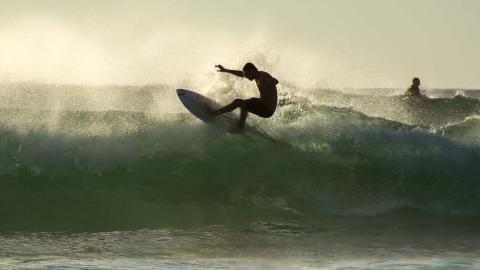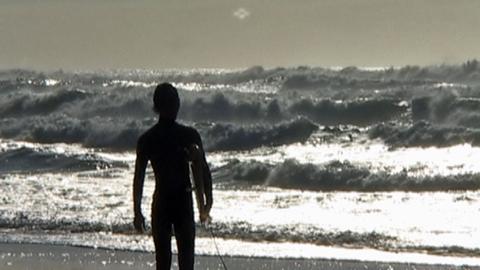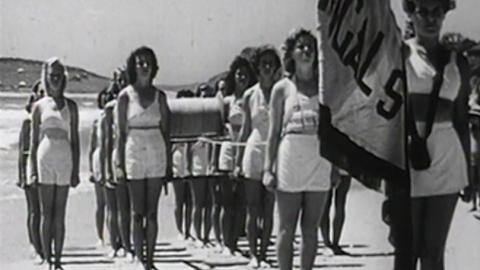
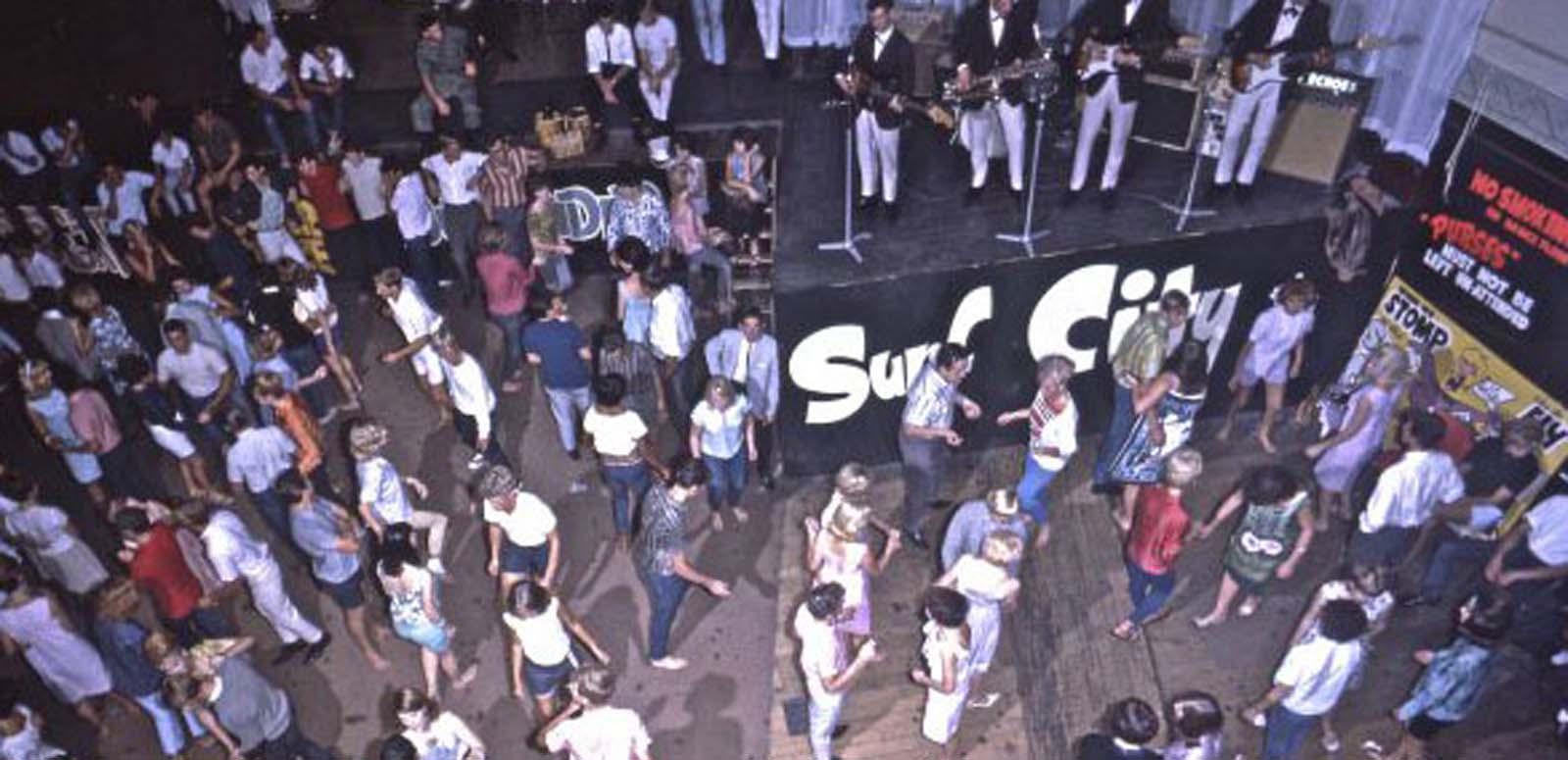
The summer of surf music
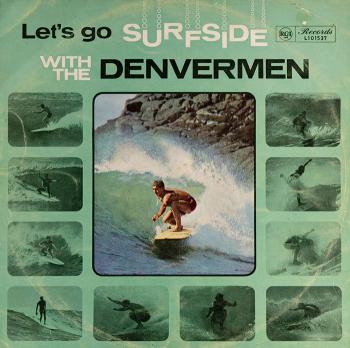
The summer of 1963-64, 50 years ago, was the summer of surf music in Australia. Sixteen Australian recordings with a surfing theme hit the charts, with The Atlantics’ ‘Bombora’ and ‘Hangin’ Five’ by the Delltones reaching No. 1 on the Sydney charts between August 1963 and April 1964. Another Atlantics instrumental, ‘The Crusher’, and Little Pattie’s ‘He’s My Blond Headed Stompie Wompie Real Gone Surfer Boy’ got to No. 2 while the other 12 made it into the Top 40 for at least a week or two. The Beach Boys, Jan and Dean, The Surfaris and other American musicians joined them in the charts, but Australian surf music captured the public’s imagination in equal measure.
Four of the five most popular tracks in 1963 were surf instrumentals, two Australian and two from the US with the fifth being a song from The Delltones. A year later ten of the top 12 songs were from the Beatles and surf music was an almost forgotten footnote of Australian popular music.
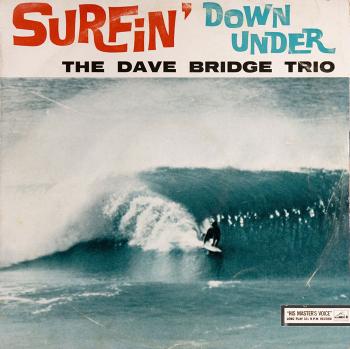
There were three key expressions of surf music. Guitar-based instrumentals helped define the genre, then came songs with a surfing theme and the Stomp, the dance craze of the period, inspired both songs and tunes.
The songs were typical pop songs of the period, the better of them catchy and inoffensive, exploring the usual themes of young and/or lost love in a beach setting. The instrumental tunes were inspired by the reverb-soaked guitar sound of English bands such as The Shadows as well as the twang of the American west coast.
The popularity of the Stomp turned a minor American dance into a national Australian phenomenon with 45,000 reportedly turning up to the first (and perhaps only) National Championships held in Sydney in February 1964.
Cinesound newsreel. Courtesy Cinesound Movietone Productions. NFSA title: 29035
‘Surfside’ – The Denvermen
'Surfside’ by The Denvermen. HMV EA 4506 NFSA title: 321671.
The first Australian surf hit was the instrumental ‘Surfside’ from The Denvermen, entering the charts in January 1963 and reaching No. 1 in the Sydney Top 40. It had the required Fender lead electric guitar sound, cleverly recorded with a tape echo machine timed to the rhythm of the tune. This was the first instrumental single for The Denvermen who had previously been Digger Revell’s backing band. The Denvermen had an advantage over most of the other bands in the Sydney region, as the father of the band’s lead guitarist, Les Green, worked for one of the big music stores in central Sydney. This meant the band had access to the latest guitars, amps and PA equipment to produce the favoured sound of the time. ‘Surfside’ had a catchy enough melody that it was recycled a few months later for ‘I Watch The Surf’ by singer Darryl Stewart. The Denvermen had two other charting instrumental singles in 1963 alongside The Atlantics’ ‘Bombora’ (another No.1 on the charts).
‘Hangin’ Five’ – The Delltones
'Hangin’ Five’ by The Delltones. Festival LK 461 NFSA title: 295881.
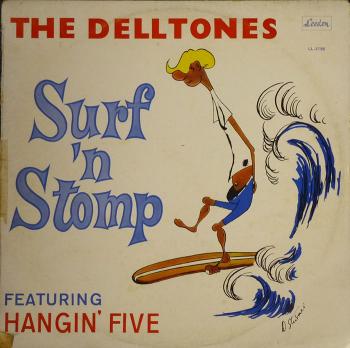
By October 1963 the surf music summer was starting to heat up and songs started to appear to complement the guitar instrumentals. The first song hit was ‘Hangin’ Five’ from The Delltones, becoming the third local surfing single to get to No. 1 that year. The Delltones had come out of the American doo-wop school of close harmony singing, and were well known on the Sydney music scene as live performers and recording artists. ‘Hangin’ Five’ cleverly incorporated just about every bit of surfing slang into two minutes of cheesy organ accompaniment and a guitar break introduced by a cry of ‘let’s stomp’. The song mixed doo-wop vocals with early rock guitar and hip surfing lyrics to create a catchy summer tune.
The Stomp was a simple dance, little more than two stamps of each foot with the hands clasped behind the back while shifting your weight slightly from side to side. A stomp had been for many years a basic jazz rhythm, introduced by pianist Jelly Roll Morton in 1923, but became the Surfer’s Stomp thanks to west coast American group Michael Z Gordon and the Marketts in 1961.
The dance caught on in Australia in 1963 and became an integral part of the surfing culture. ‘Avalon Stomp’ from The Denvermen was the first stomp-themed single, followed a couple of months later by ‘Bondi Stomp’ from the Dave Bridge Trio.
‘Surfin’ Down Under’ – The Dave Bridge Trio
'Surfin’ Down Under’ by The Dave Bridge Trio. HMV OCLP7608 NFSA title: 313172
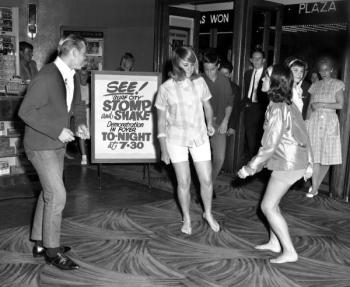
Bridge was formerly the lead guitar for Col Joye’s backing band The Joy Boys but left to form his own instrumental group and work as a session player. Their 1963 LP Surfin’ Down Under was 12 tracks of surfing-themed instrumentals (at least in the titles of the tunes) and showed an inventiveness and musical ability rather greater than most of the other guitar bands of the period. ‘Bondi Stomp’ got to No. 18, but the title track of the LP was dark and moody and one of the most interesting tunes of the genre. The distorted and murky sound of the lead guitar, coupled with an out-of-tune dissonance, hints at the psychedelic sound to emerge a few years later.
‘He’s My Blond Headed Stompie Wompie Real Gone Surfer Boy’ – Little Pattie
'He’s My Blond Headed Stompie Wompie Real Gone Surfer Boy' by Little Pattie, 1963. Courtesy: HMV EA 4604. NFSA title: 31530
'He’s My Blond Headed Stompie Wompie Real Gone Surfer Boy’ by Little Pattie. HMV EA 4604. NFSA title: 315308
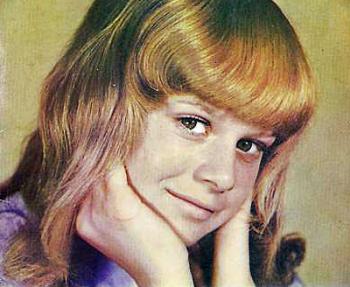
For sheer whimsy it is hard to go past the one minute and forty seconds of ‘He’s My Blond Headed Stompie Wompie Real Gone Surfer Boy’ by the 14-year-old Little Pattie. Apart from being one of the longest song titles in the history of popular music, Pattie’s yodelling chirrups at the end of each line of the verses and the coy spoken bridge section after the second verse earn it a special place in Australian pop music. It got to No. 2 in the Sydney charts and got her a best female Vocalist Award for 1963. The B side was ‘Stompin’ at Maroubra’ and both songs were written by producer Joe Halford and singer Jay Justin. The Statesmen provided the instrumental and vocal backing.
‘Maroubra’ – The Midnighters
'Maroubra’ by The Midnighters. RCA 101535. NFSA title: 322447 .
Maroubra was Little Pattie’s local beach and the long gone ice-skating rink was the venue where teenage rockers The Midnighters had a regular gig entertaining the skaters. ‘Maroubra’ backed with ‘Goofy Foot’ was their first single, released in October 1963. ‘Maroubra’ featured the almost mandatory beach sound effects at the beginning and end, bracketing a smooth but simple guitar melody. The bridge offers a contrast with a staccato damped guitar sound and has a clever modulation back to the original theme for the last repeat. It is nothing fancy but perhaps should have done better than it did, not bothering the chart accumulators at all.
‘Beach Ball’ – Jimmy Hannan
'Beach Ball’ by Jimmy Hannan. NFSA title: 742514.
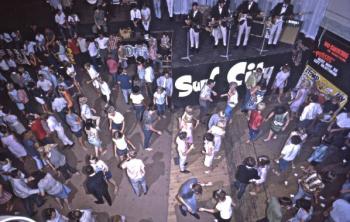
While there was refreshing embracement of Australian themes in much of this music, sometimes it was obviously just easier to recycle an American hit. Jimmy Hannan was a popular singer and hosted a teen music show Saturday Date (for which he scored the Gold Logie, Australia’s highest TV award, in 1965). ‘Beach Ball’ was a note for note cover of the US original recorded by The City Surfers who included Roger McGuinn (the co-writer of the song) and Bobby Darin on drums. There is a relentless cheeriness about the original which the local copy didn’t quite catch in the re-recording.
‘Surfer Boy’ – Noleen Batley
'Surfer Boy’ by Noleen Batley. Festival FK 488. NFSA title: 301300
Surfing music tempted numerous Australian performers to dip their toes into the craze. Singer Noleen Batley was Australia’s first female pop star, one of the Bandstand ‘family’ of regular performers on the long-running TV music show. ‘Surfer Boy’ was one of the first Barry Gibb songs to be recorded and remains one of the few Australian pop songs to feature a cor anglais as a lead instrument. It adds to the slightly melancholy charm of the song.
‘Murphy the Surfie’ – The Joy Boys
'Murphy the Surfie’ by The Joy Boys. Festival FK 471. NFSA title: 324222
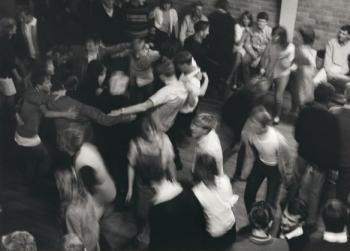
Although Col Joye didn’t record any surfing songs his backing band, The Joy Boys, recorded several singles and EPs of instrumentals through 1963-64 with their biggest hit ‘Murphy the Surfie’ backed with the oddly named ‘Zambesi Stomp’. ‘Murphy the Surfie’ is a jaunty tune, typical of the style, and distinguished by the inclusion of slightly maniacal laughter at the end of each verse and a ‘drowning’ effect at the end of the tune. It is also notable for having a cover version recorded by American surf band The Surfaris (best remembered for ‘Wipe Out’) which they learnt when The Joy Boys were the Australian support act for a 1964 tour that included The Beach Boys, The Surfaris and Roy Orbison, though it was unlikely that Roy Orbison was performing surfing material.
Col Joye radio commercial. Courtesy Col Joye. NFSA title: 622361
The radio commercial for one of Col Joye’s live surf music shows is a rarity and is part of the Col Joye Collection at the NFSA. Live shows with several performers on the bill were common and Col Joye and his brother Kevin were active in the promotion of such events. Even though this concert/dance is promoted as a surf show, the musical excerpts are from Joye’s rock ‘n’ roll repertoire and with the exception of The Joy Boys, none of the other acts had much connection with surf music other than it was the current fashion. As a piece of radio production it is fairly crude, but effective for its purpose.
The cultural divide in Sydney in 1963, at least amongst fashionable young people, was between the Surfies and the Rockers. It was as much geographical as anything else, with residents in the Eastern Suburbs or the Northern Beaches predisposing a leaning towards the surfies. Clothing, hairstyles and the music listened to also placed teenagers in one group or the other.
‘My Little Rocker’s Turned Surfie’ – Digger Revell and the Denvermen
'My Little Rocker’s Turned Surfie’ by Digger Revell and the DenvermenRCA 101544. NFSA title: 322473 .
‘My Little Rocker’s Turned Surfie’ from Digger Revell and the Denvermen was one of the last of the surfing hits and reached No. 9. It could be seen as an attempt by writer and producer Johnny Devlin to appeal to both sides of the cultural divide, as the song’s subject transformed from a dark-haired, leather-jacketed rock sheila to a blond surfer chick and the boyfriend has to follow suit.
‘Stomp the Tumbarumba’ – Johnny Devlin
'Stomp the Tumbarumba’ by Johnny DevlinFestival FK 472. NFSA title: 321127 .
Johnny Devlin was responsible for a good proportion of Australian surf music. While still signed to Festival Records as a recording artist he had been able to get a job at competitor RCA Records as their Artists & Repertoire (A&R) manager. This involved both finding performers as well as songs that they could record. He wrote several of The Denvermen’s hit tunes and signed The Midnights, The Renegades, Tony Brady and Digger Revell to RCA. One of his biggest hits was ‘Stomp The Tumbarumba’ that he recorded for Festival in November 1963. It was common practice to add a geographical tag to a Stomp tune or song, such as ‘Bondi Stomp’ or ‘Avalon Stomp’ where there is an obvious link. The connection between surfing and Tumbarumba (in inland NSW) remains elusive.
References
David Kent, Australian Chart Book 1940-1969, Australian Chart Books, 2005
Stephen J McPartland, Waltzing the Plank, The Illustrated Encylopedia of Australian Surf Music 1963-2003, California Music, 2004
Gavin Ryan, Sydney Pop Music Charts 1953-2003, Moonlight Publishing, 2004
The National Film and Sound Archive of Australia acknowledges Australia’s Aboriginal and Torres Strait Islander peoples as the Traditional Custodians of the land on which we work and live and gives respect to their Elders both past and present.
